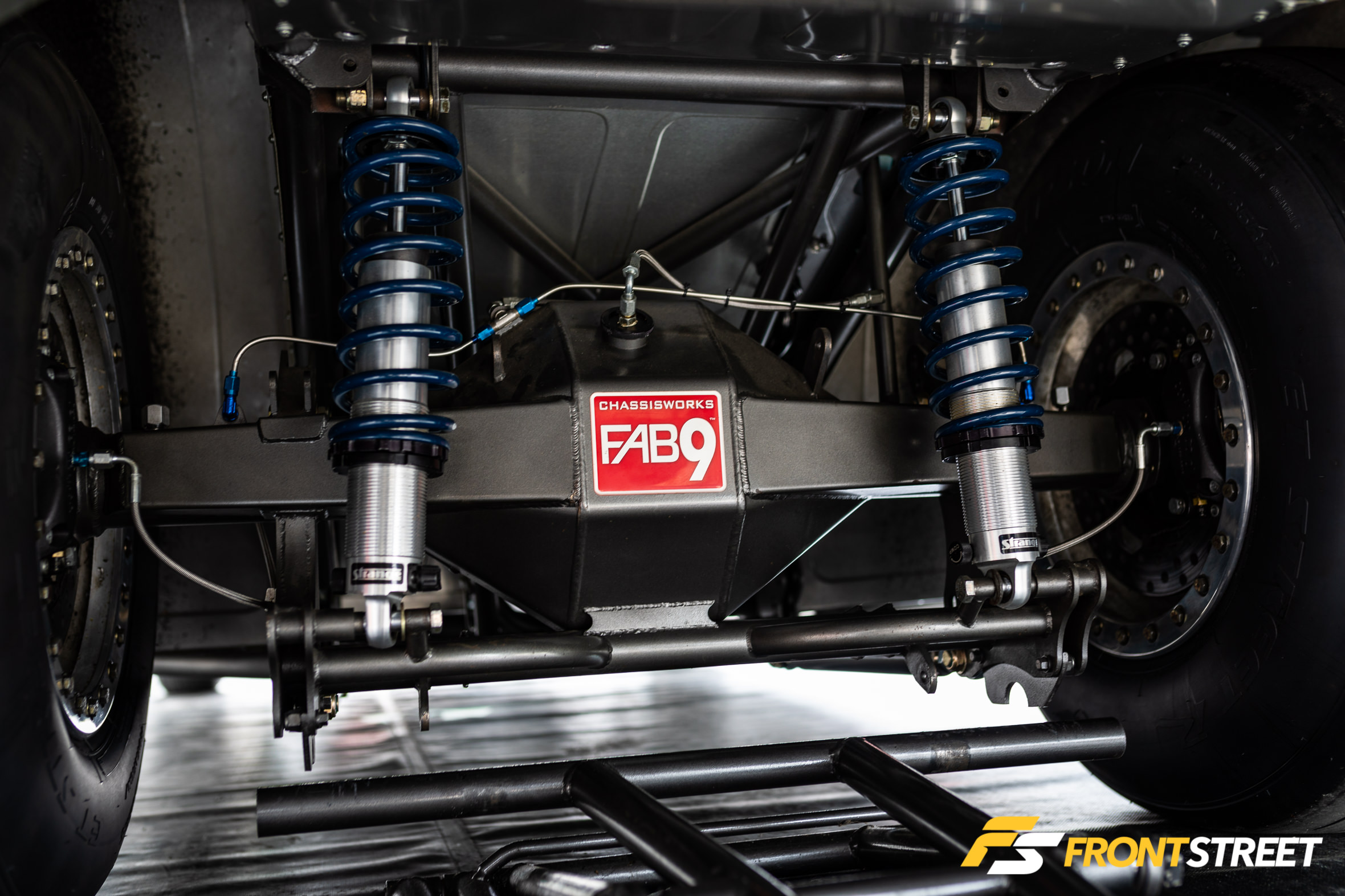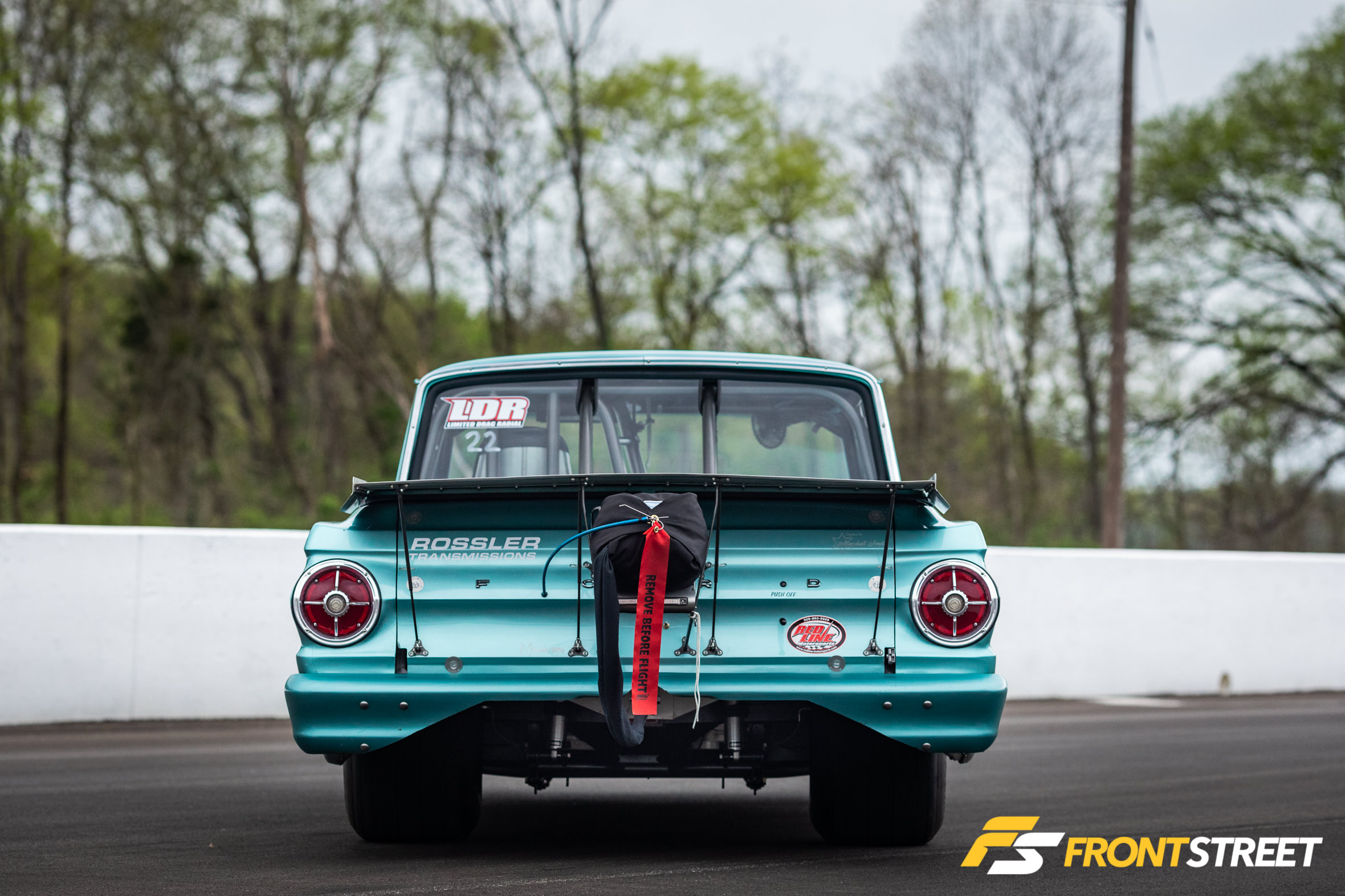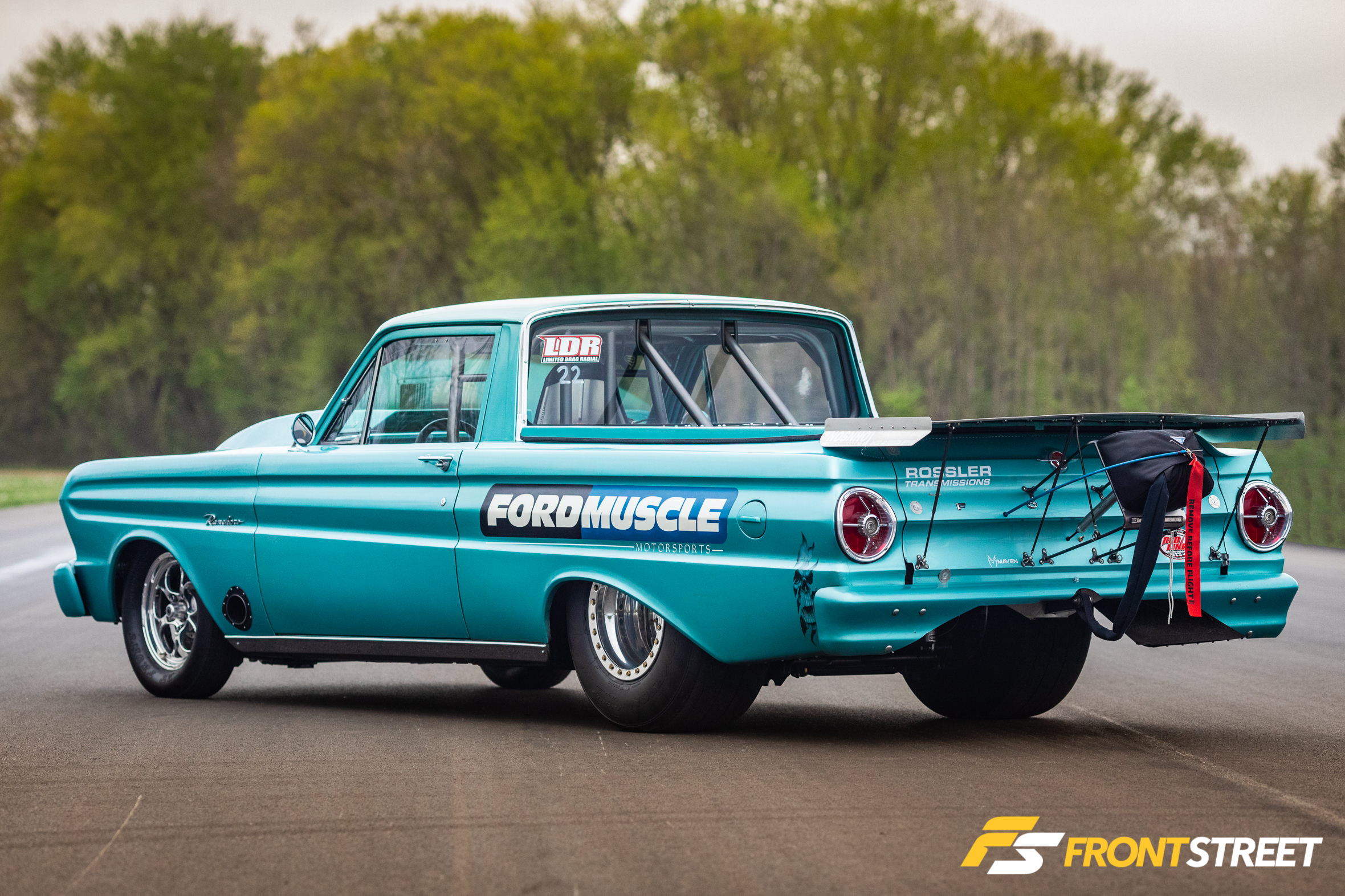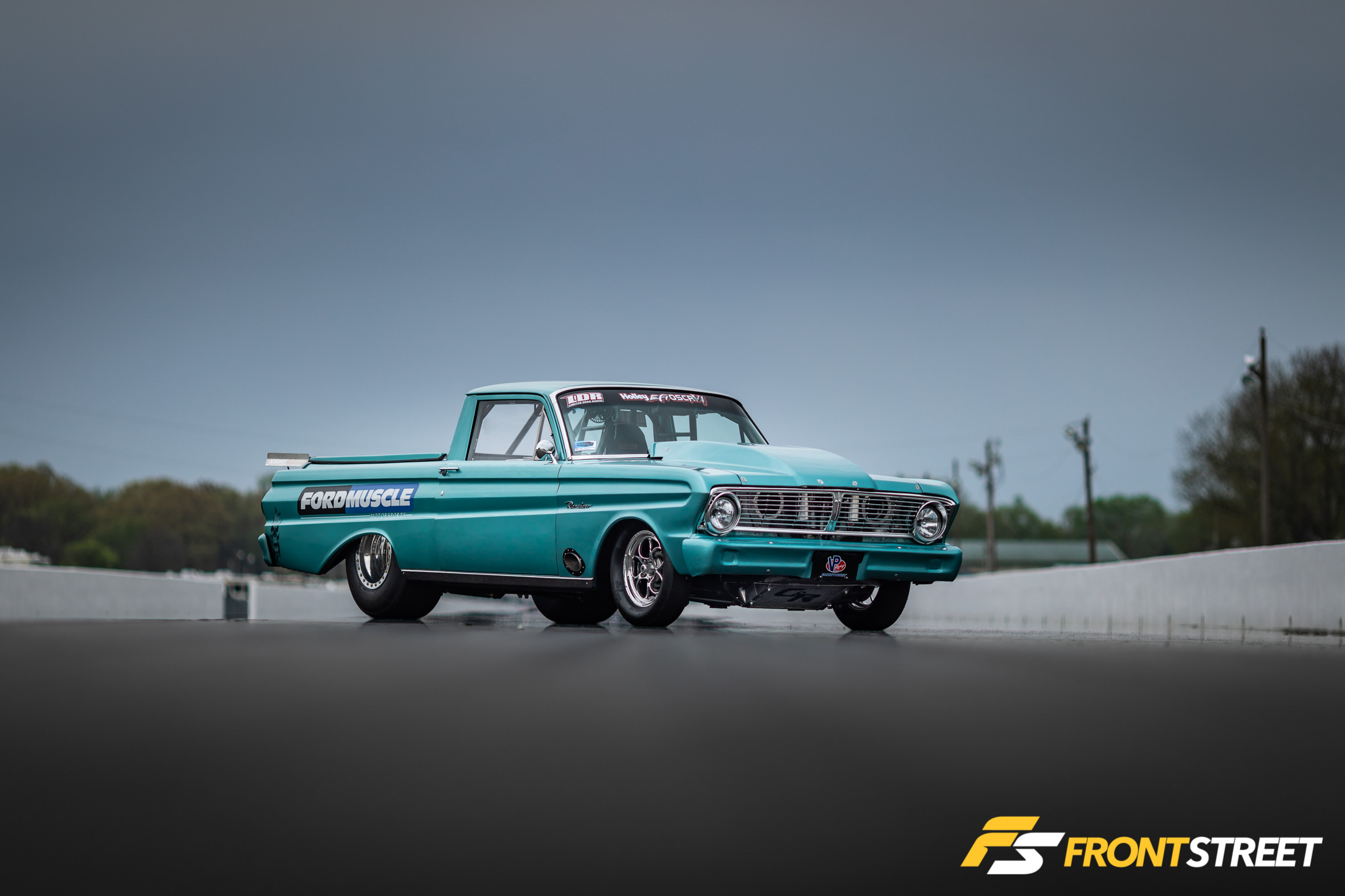
For every no-expense-spared, budget-on-fire car build undertaken at the latest and greatest shops on the planet, there are 20 guys building as time and money allows, eating peanut butter and jelly sandwiches and ramen noodles while toiling over the details with big dreams and little sleep. It’s these people—the drag racers, car show guys, and road-course fanatics—who are the heart and soul of the automotive performance world. They are the budget builders who can’t get enough of their need for speed and performance and take years or longer to finish a project, and at the end know each and every detail and will be happy to discuss them with you. Over the last several years, I’ve been watching as Rick DeVito has taken the ’65 Falcon Ranchero you see here from its previous configuration to the current layout.
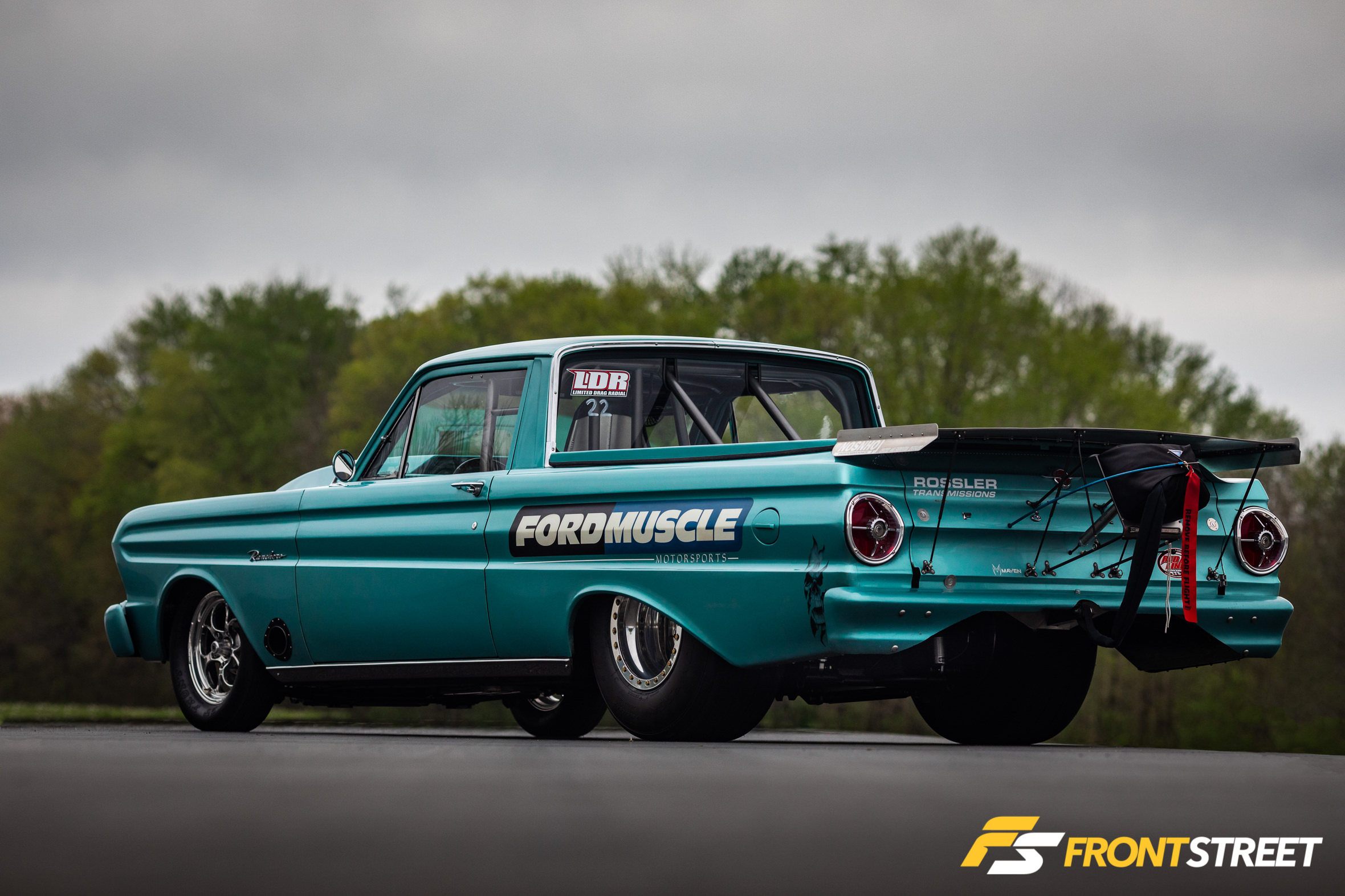
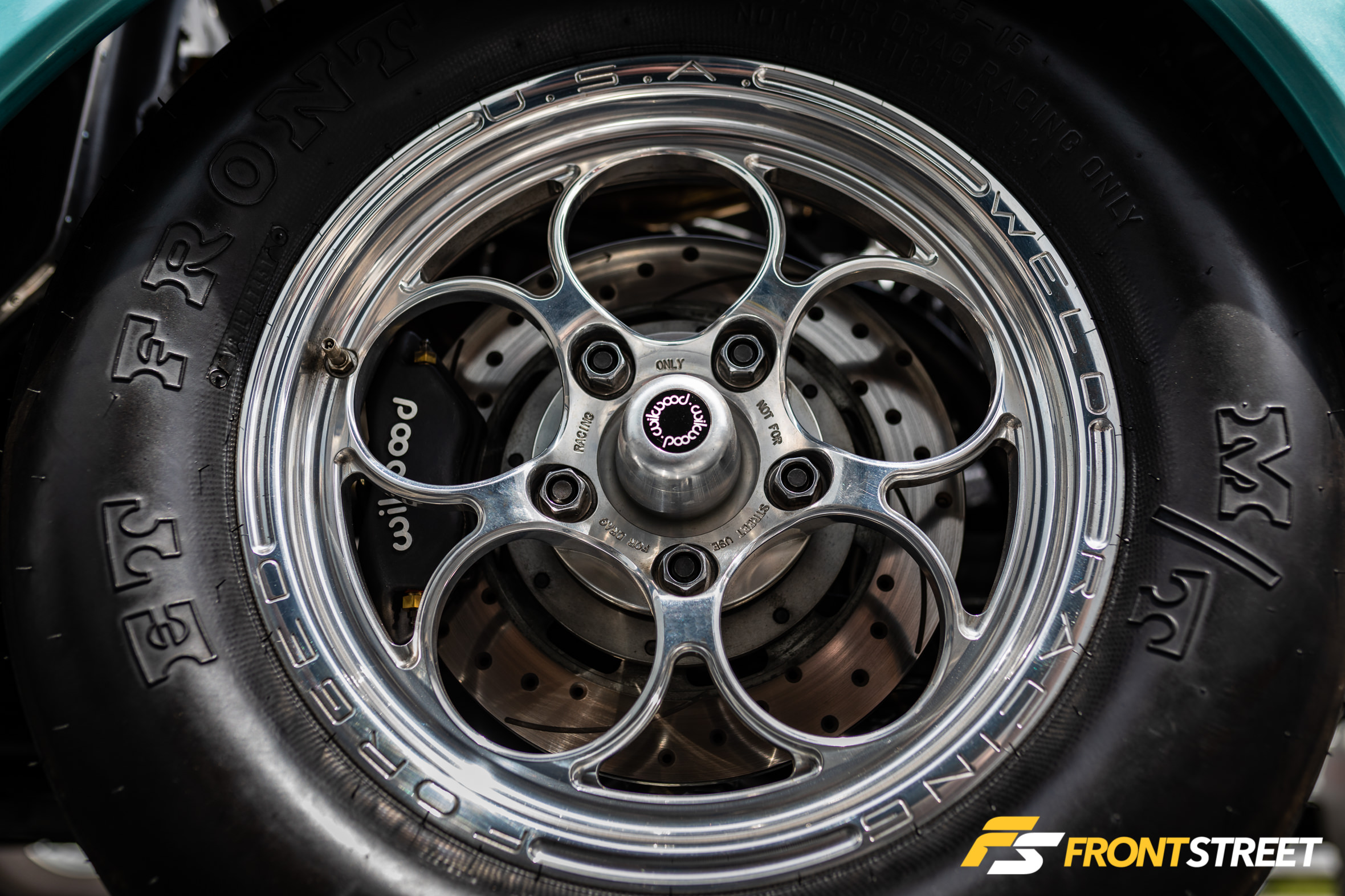
Rick and I first met many years ago, when he was racing regularly with the NMRA in its Truck and Lightning class; he also appeared in NMCA Open Comp over several seasons. So I’ve only known the truck as a drag race machine, but it has a much more interesting history.
“I have had the truck since 1999, and it has taken on many different stages of builds, from street rod to a World of Wheels winner in 2004 and 2007. Once the drag racing bug bit me, a whole new snowball began to roll! The Ranchero balanced on the street/strip fence for quite a while, then went from its 11.5:1-compression engine/150 shot of nitrous/street duty to the 14.5:1-compression engine with 250-horsepower nitrous plate race setup,” he says.
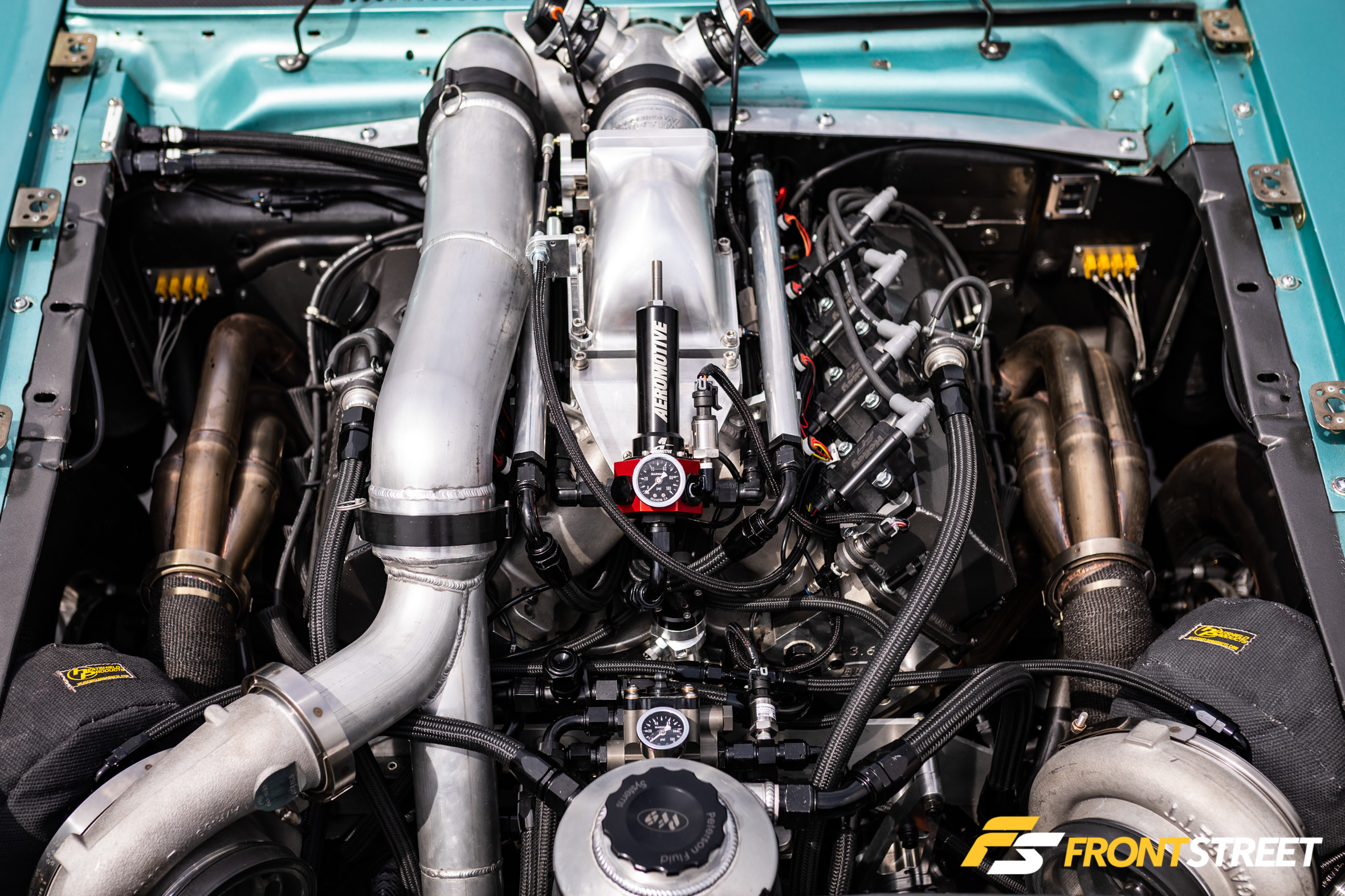
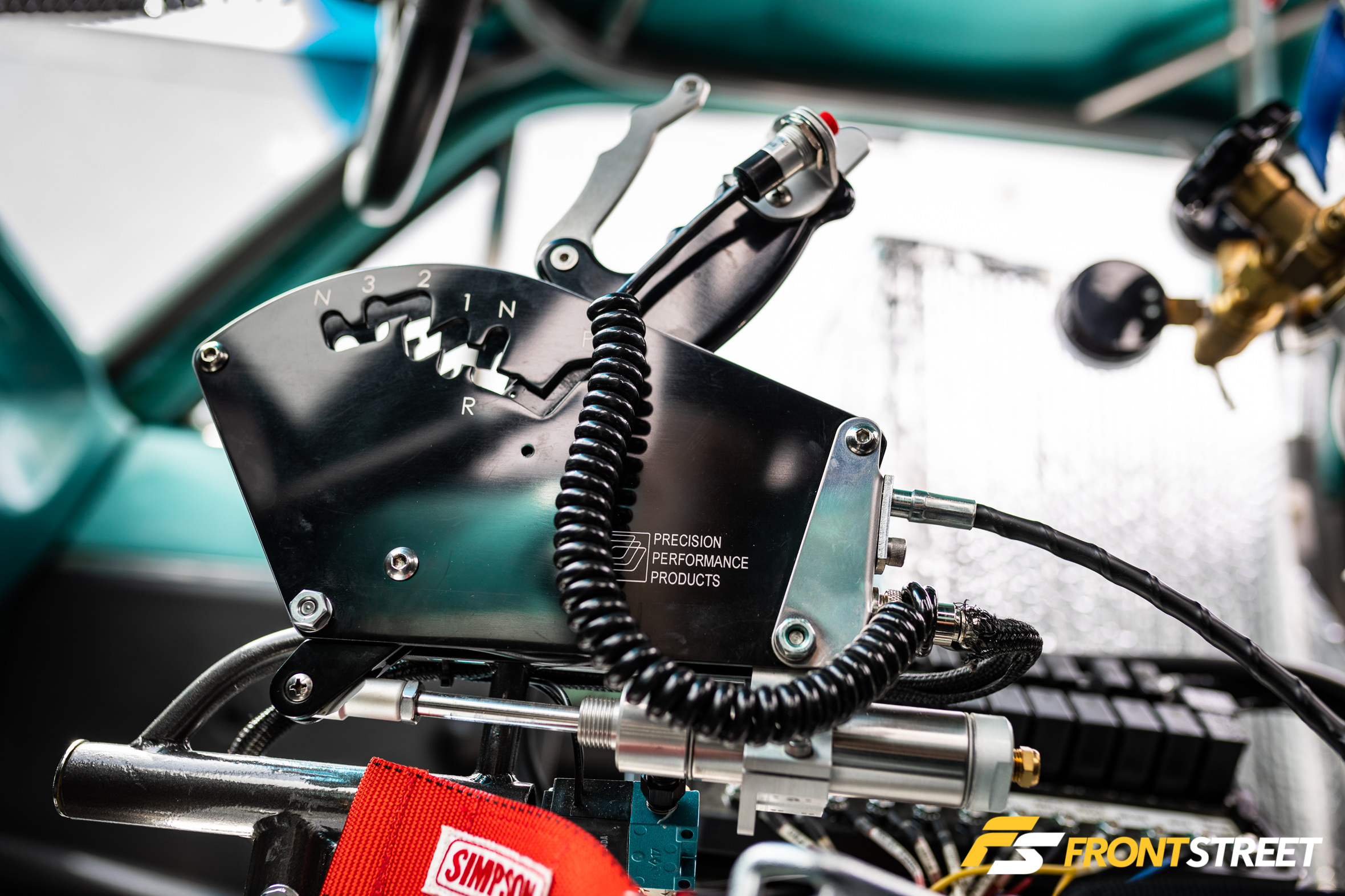
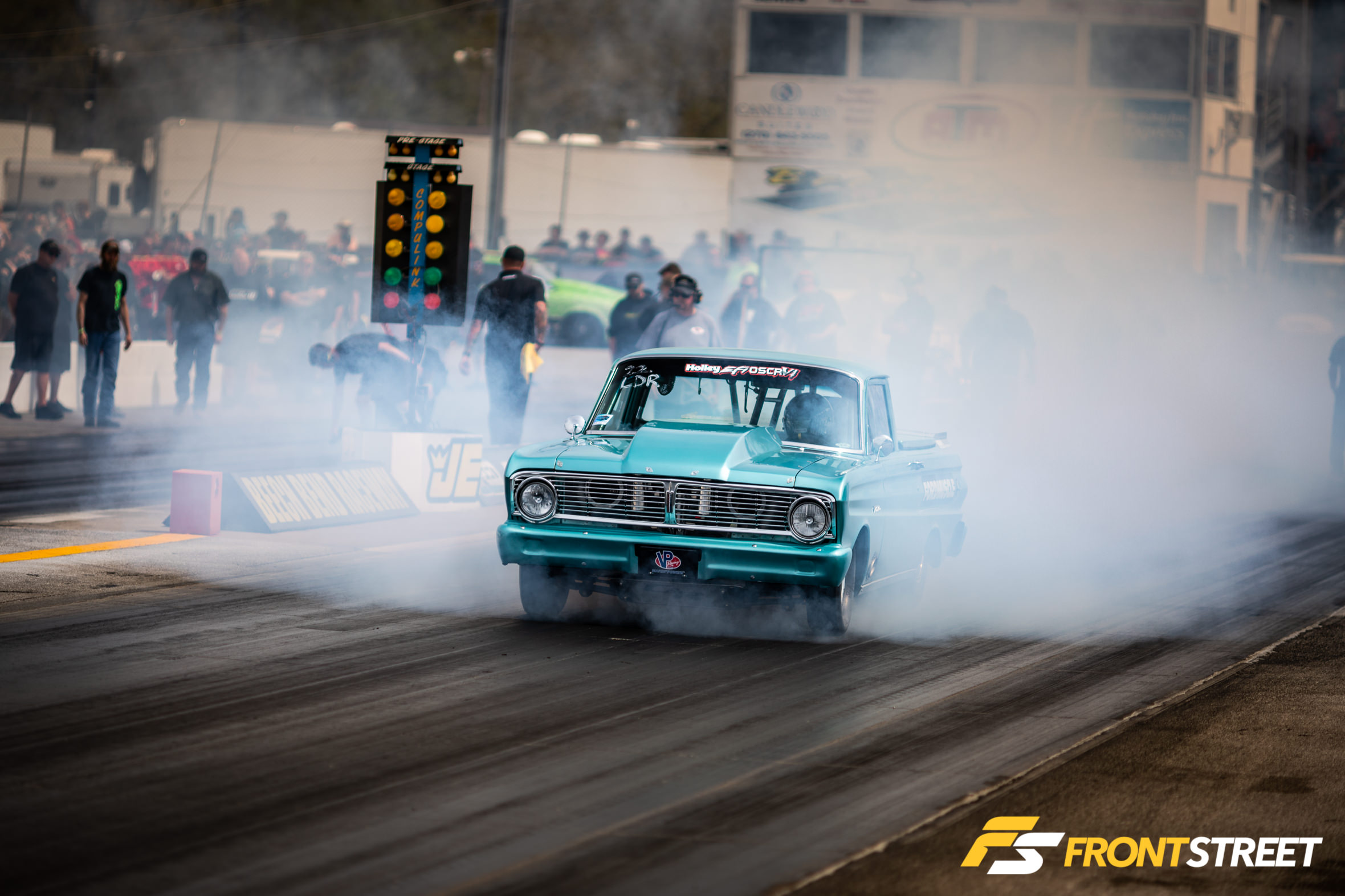
In 2009, chassis builder Pete Johnson of Nosnhoj Services crafted a 25.2 chassis to fit underneath the Ranchero’s skin. For the uninitiated reader, this chassis specification is one of the most rigorous in drag racing, and helped DeVito to set the car up for its future performance capability.
“I was able to be involved with the chassis build which was very cool, but a long and precise process. I said to myself several times, ‘I must be crazy,’ but now I realize drag racing is not for the sane of mind. I never thought after two World of Wheels first-place appearances I would be taking a sawzall to it and gutting it from rocker to rocker and tailgate to firewall, but we did just that. Pete amazed me at almost at every turn with his fabrication skills. That is also when I knew no one else would ever be doing any fabrication on the Ranchero but Pete!” he exclaims.
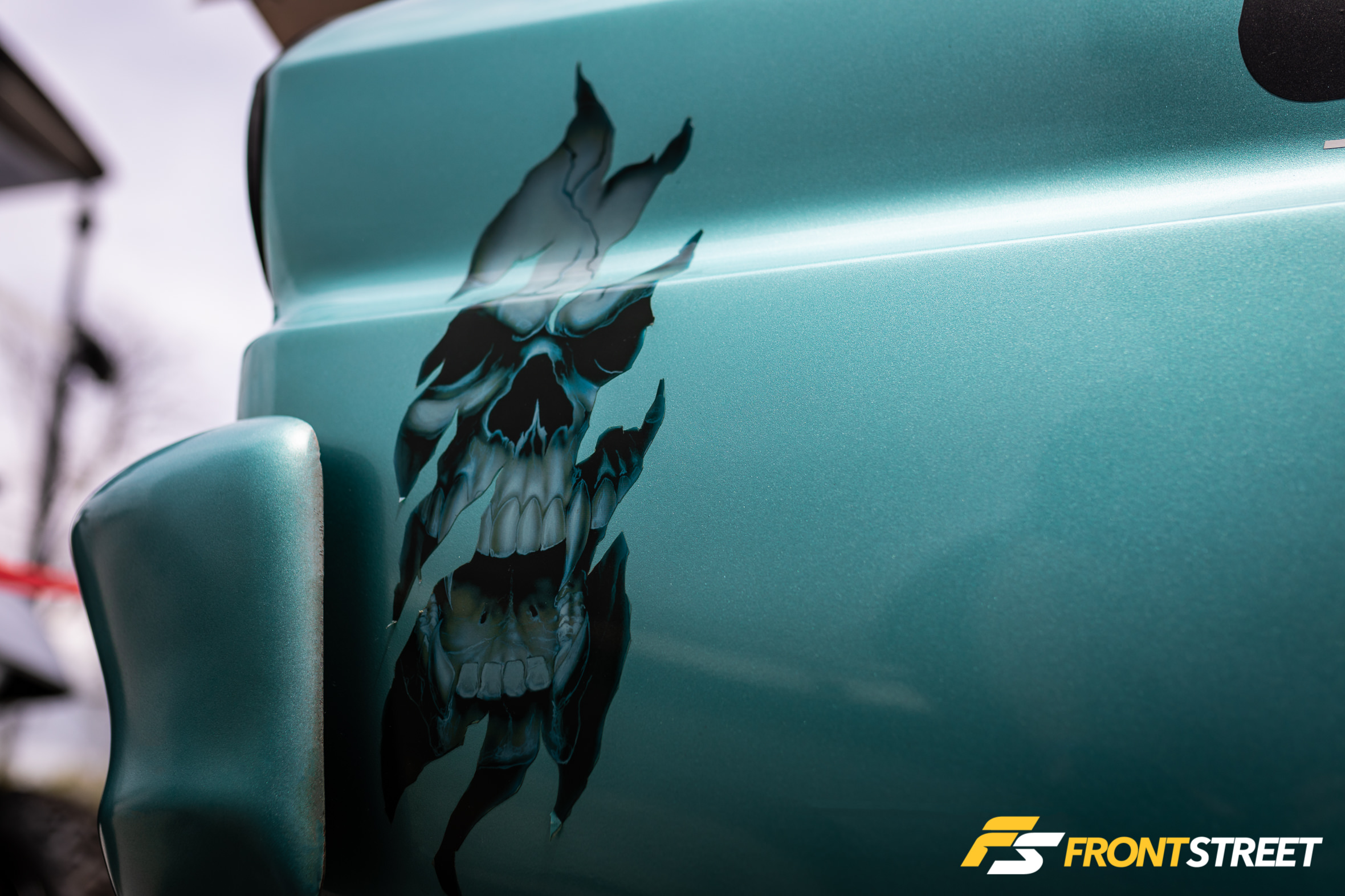
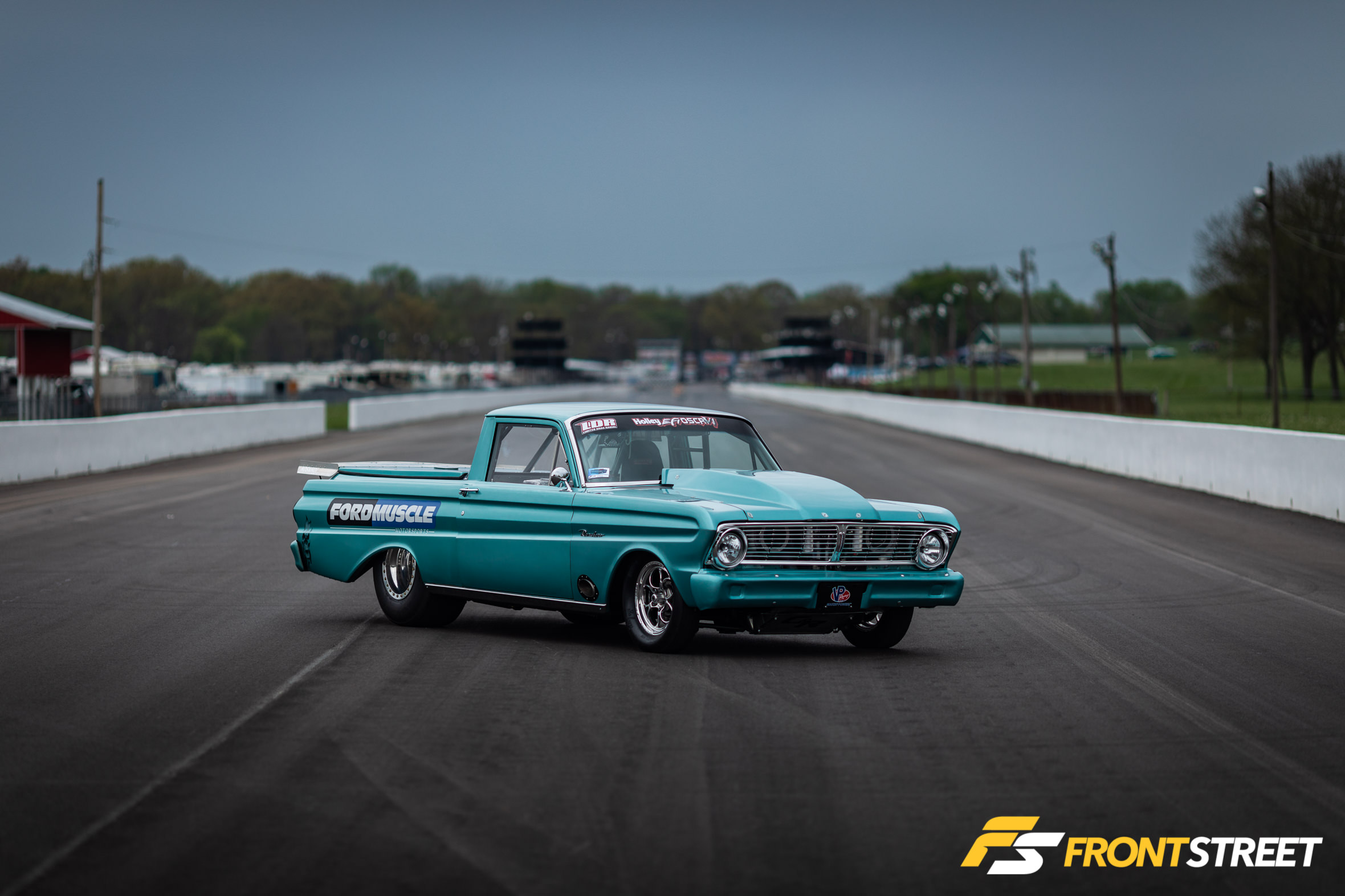
That’s a common thread for Rick, and the thought process behind the entire build this time around on the Ranchero. While I was talking with him and his ever-supportive wife Melissa at the Outlaw Street Car Reunion, we discussed the concept of how much the people make the sport.
Without Melissa supporting his dreams, and guys like Pete, Doug Johnson (Pete’s dad), and Travis McCann of Nosnhoj Services on the chassis, along with engine builder Scott Gunderman of Scott Gunderman’s Performance Engines doing his thing, he doesn’t think he’d ever have made it this far. Others with a hand in the project include racers Matt Bell, Phil Hines, Jason Lee, and Keith Szabo, each of whom provided technical assistance in some form or another.
That 351 Windsor nitrous-injected engine lasted far longer than DeVito and Gunderman ever expected, but when it gave up the ghost at the 2015 NMCA World Finals in Indianapolis with a cracked cylinder wall and two broken rods, he knew he had to double down and figure out a new plan. That’s when the idea of adding a pair of turbochargers entered the equation.
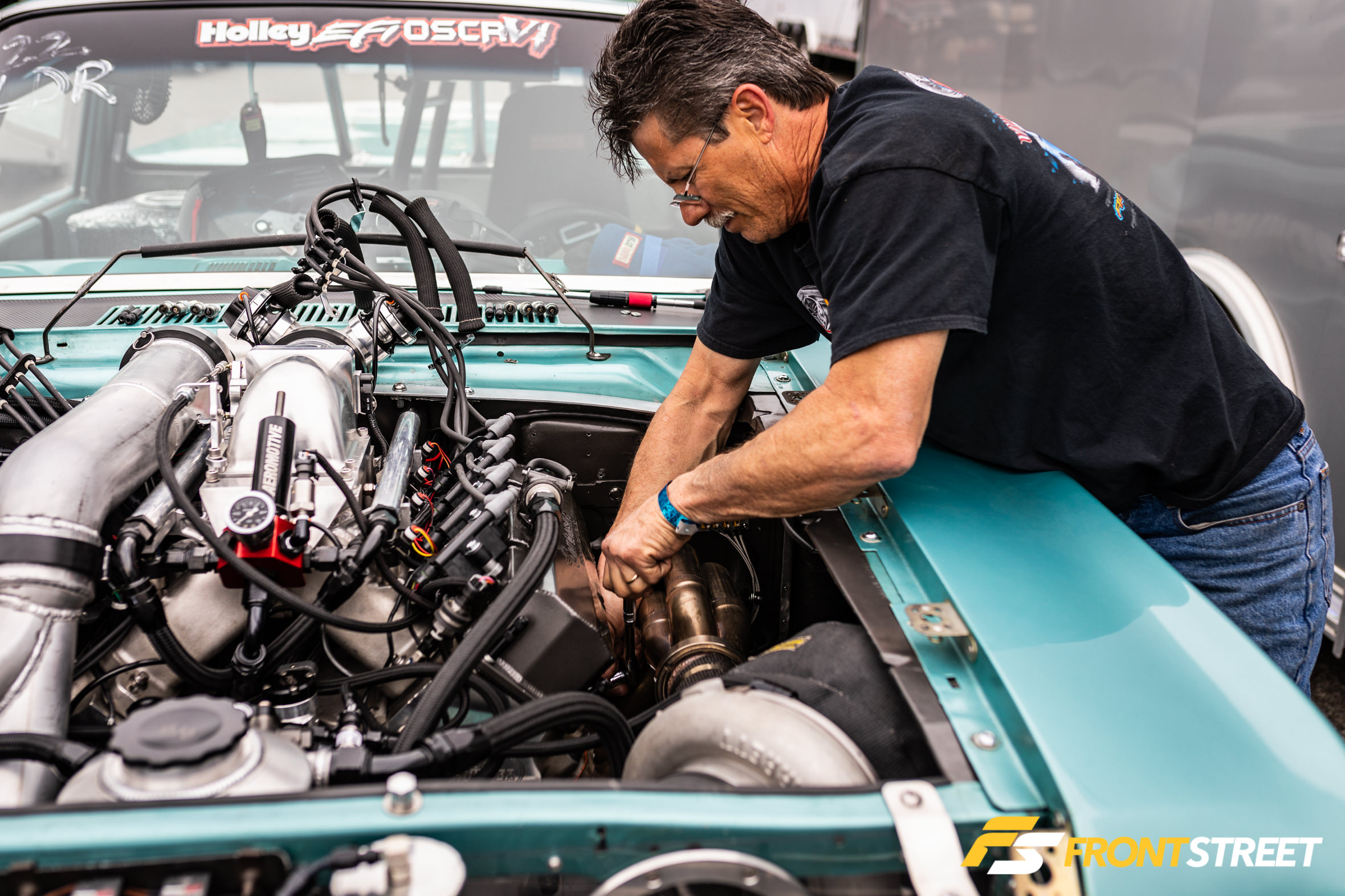
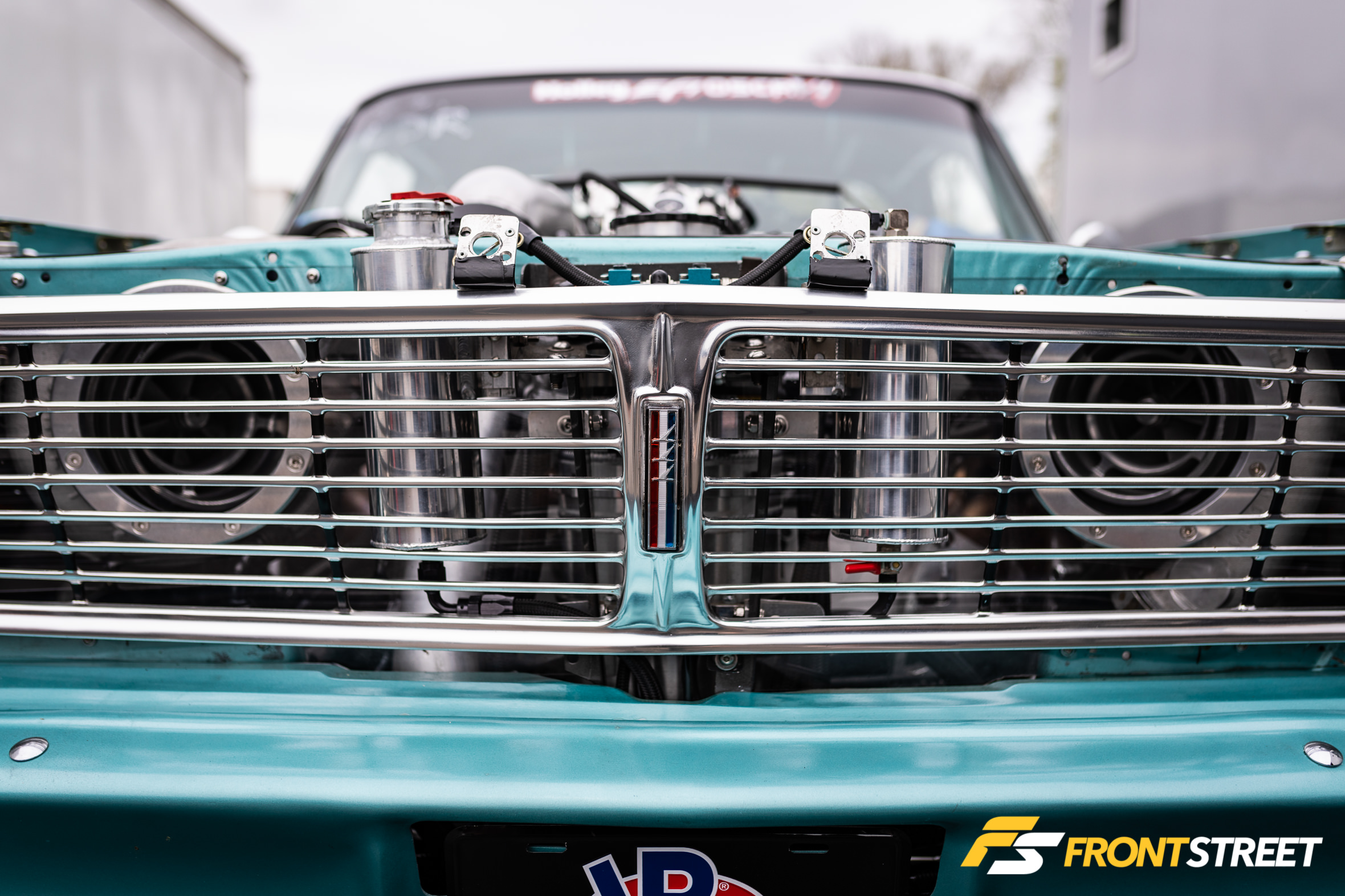
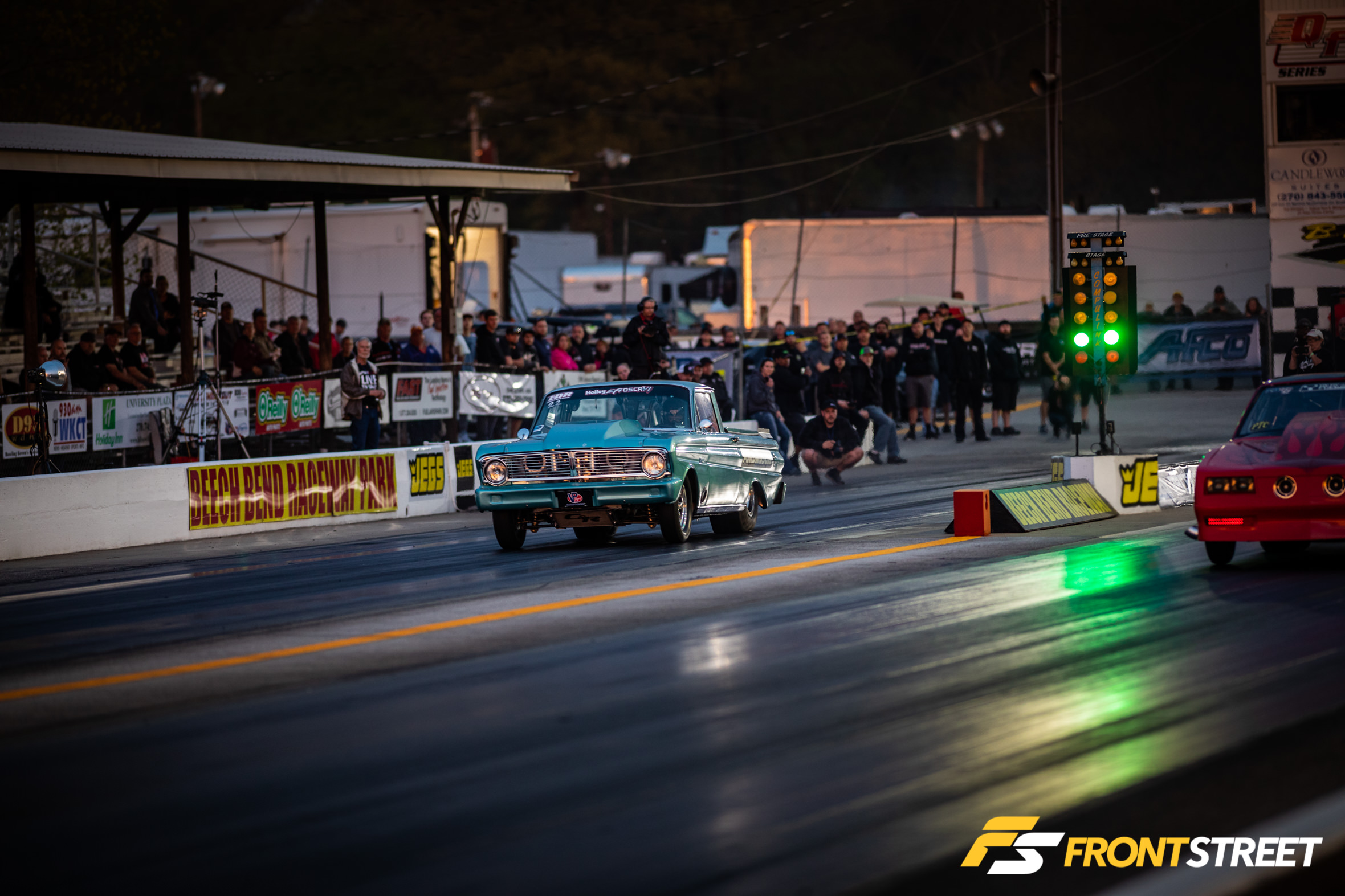
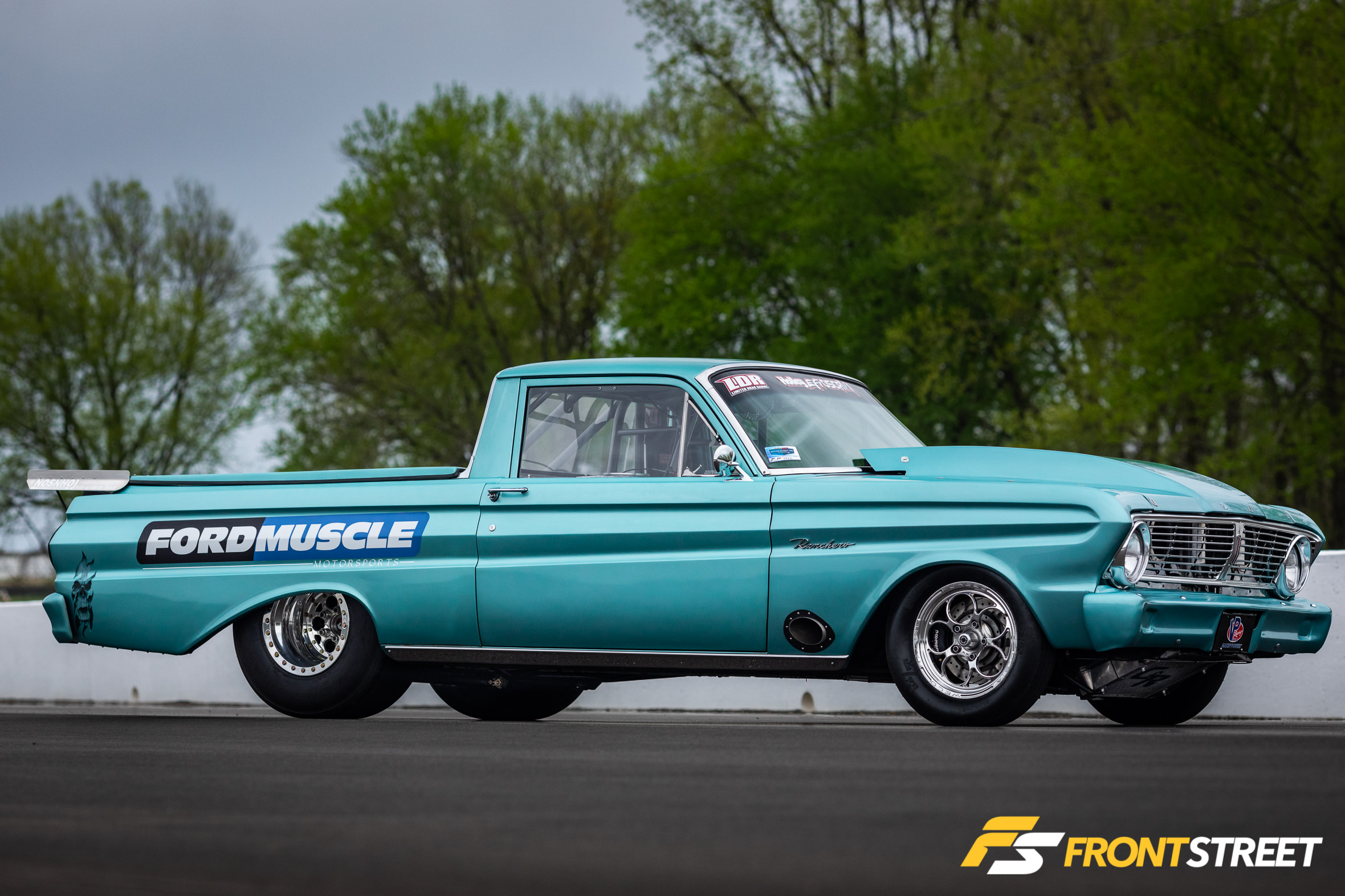
“Compiling the parts list and pricing to build the twin-turbo setup was very depressing, as my initial thought was, ‘there is no way in hell we can afford to do this!’ I actually started thinking of going back to the big nitrous combo but Melissa said ‘Oh Hell No!’ The babysitter of the bottle pressure had spoken, so we prioritized the list to purchase parts according to tax checks for big ticket items and both our paychecks for others. With no parts sponsorship, we set out to eat this elephant one bite at a time,” he says.
Eat the elephant they did; with a long-term commitment to the plan, and a high level of dedication to make the project happen no matter what challenges presented themselves, Rick and Melissa started assembling an assortment of parts to satisfy their vision.
“Unlike before, I would buy a part, get to put it on and get instant gratification. Now, I was 3 years into making a parts pile of all the best parts money could buy. Once the purchasing of the parts list was complete, Scott Gunderman began construction of the engine to go into the latest transformation of the Ranchero,” he explains.
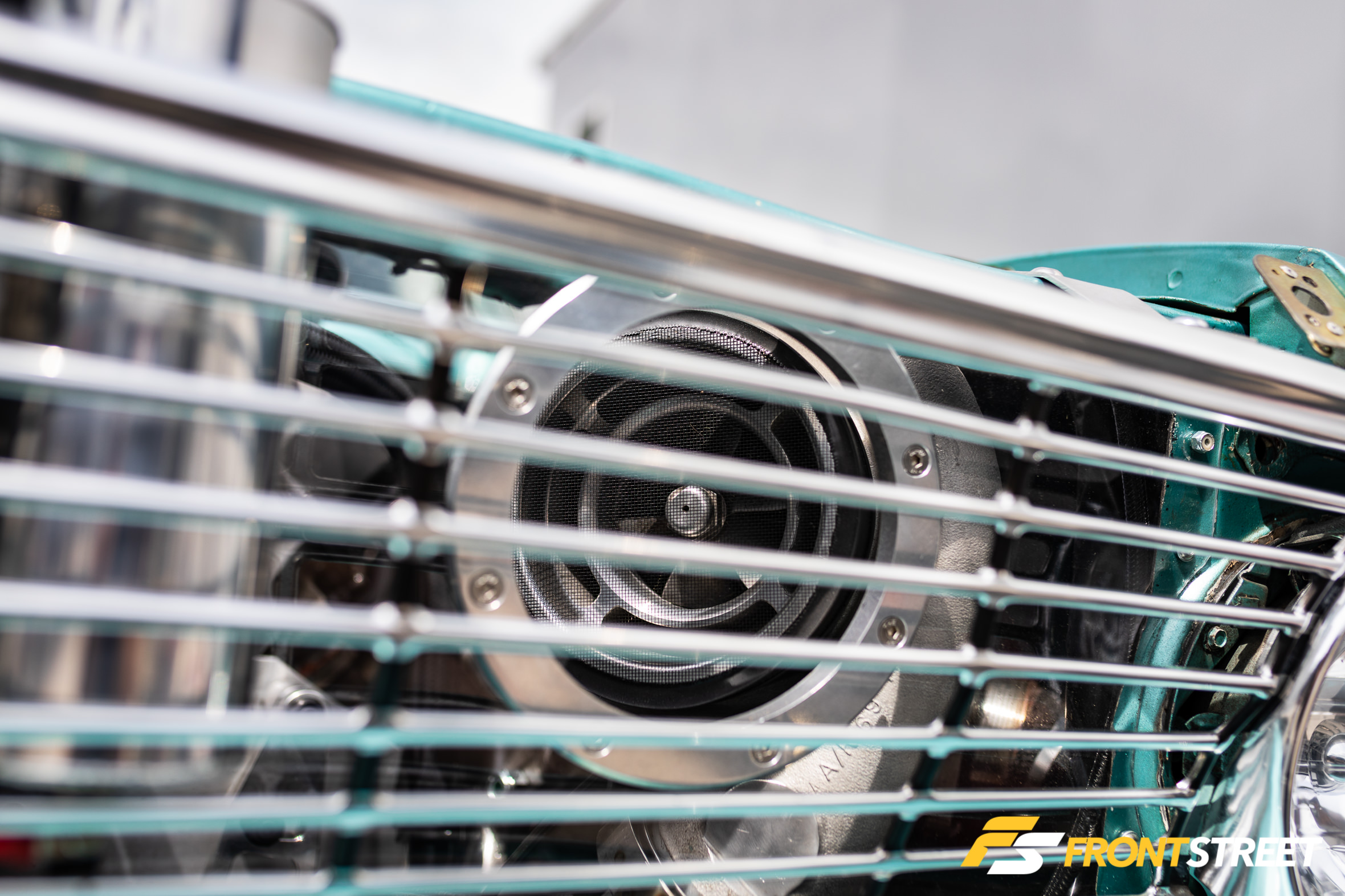
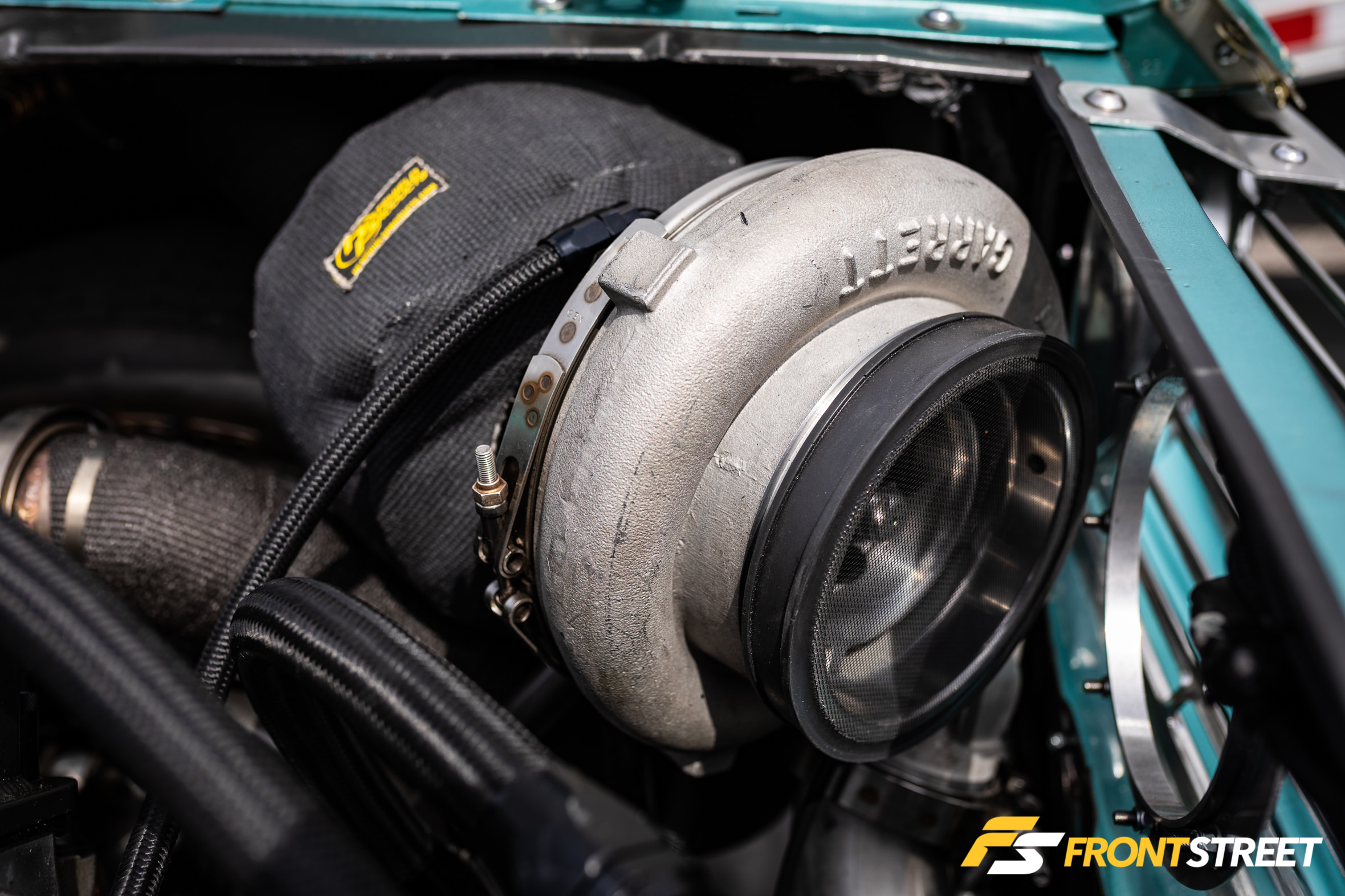
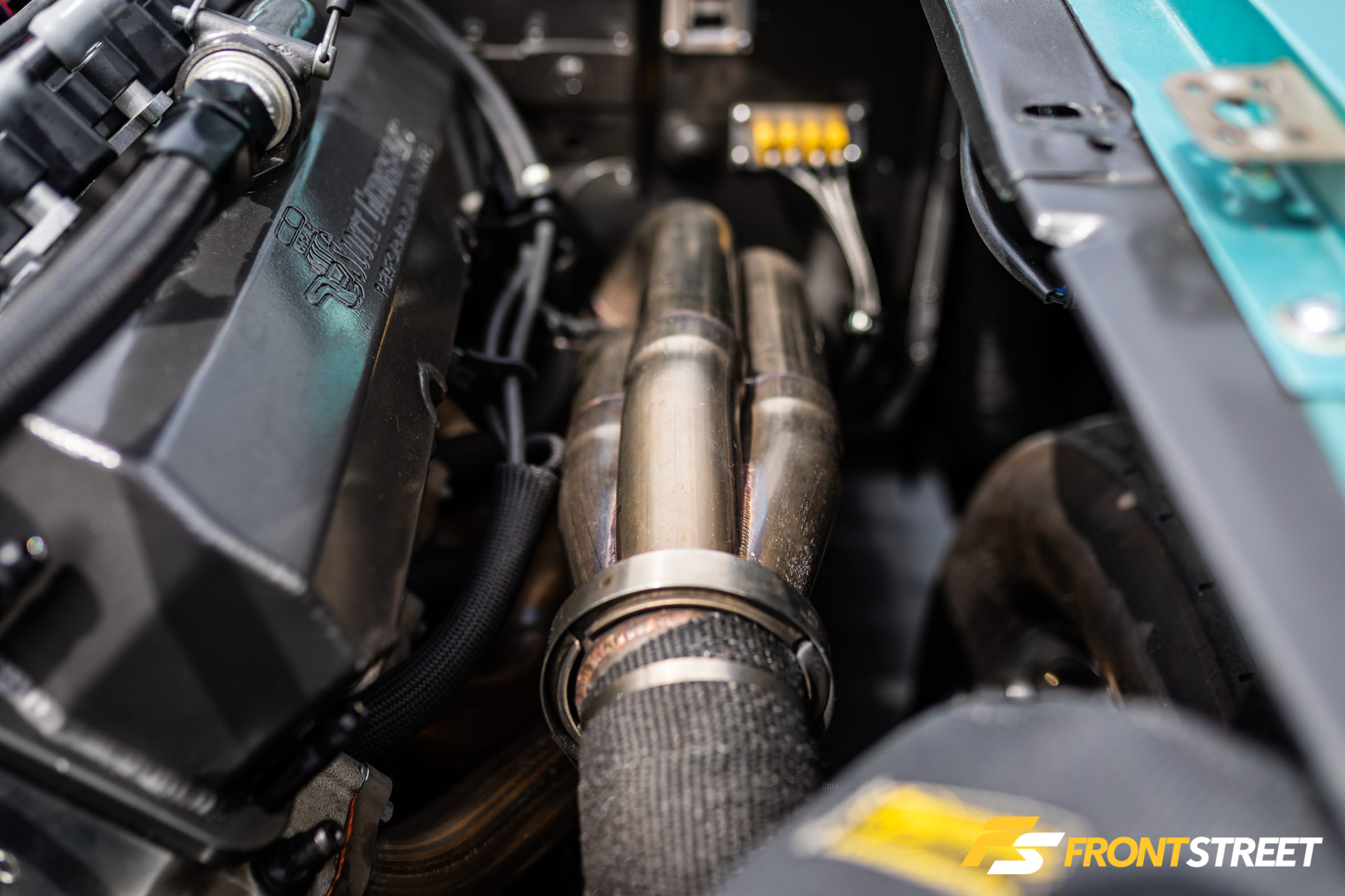
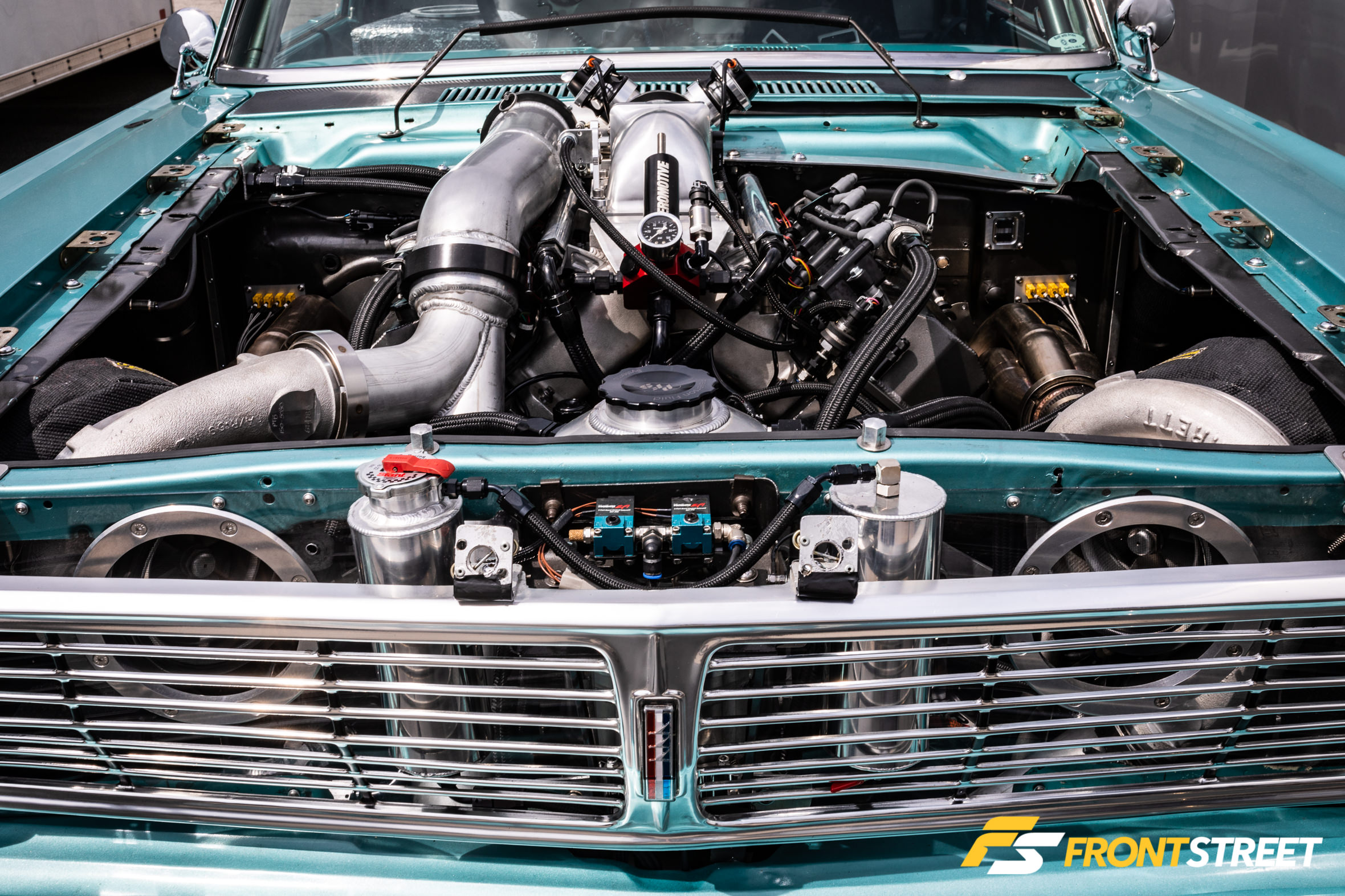
Since the FordMuscle Motorsports team had chosen to use two turbochargers in the Ranchero, Gunderman had to prepare it for the abuse it would see by setting the proper clearances by paying attention to all of the little details to ensure a long and happy boosted life.
“Getting the call to pick the engine up was very exciting. I got it home and the bullet was between the frame rails in no time. I then married the 3-speed Rossler TH 400 transmission to it and started putting on parts that had sat for three-and-a-half years. I was just like a kid on Christmas morning!” says DeVito.
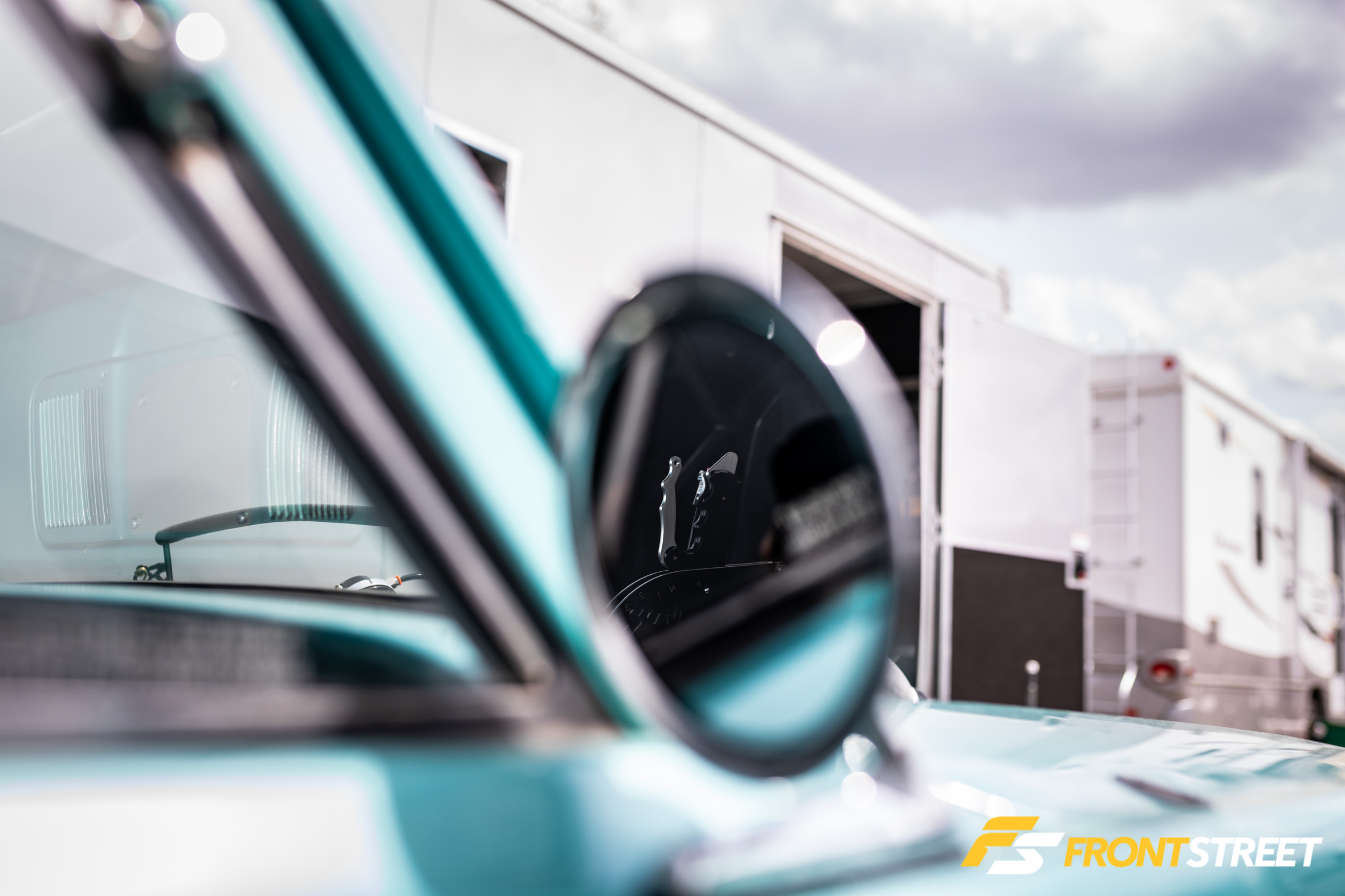
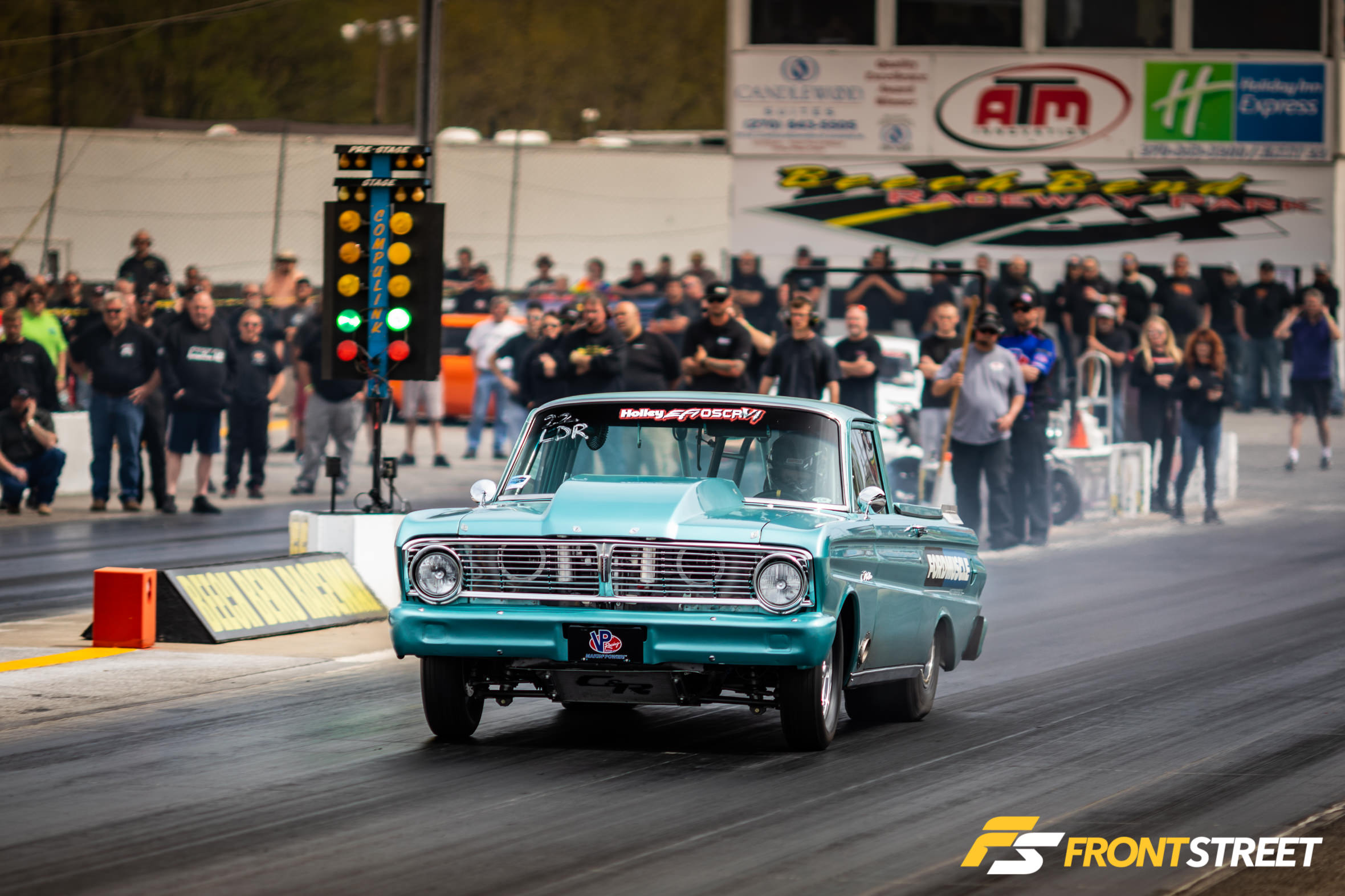
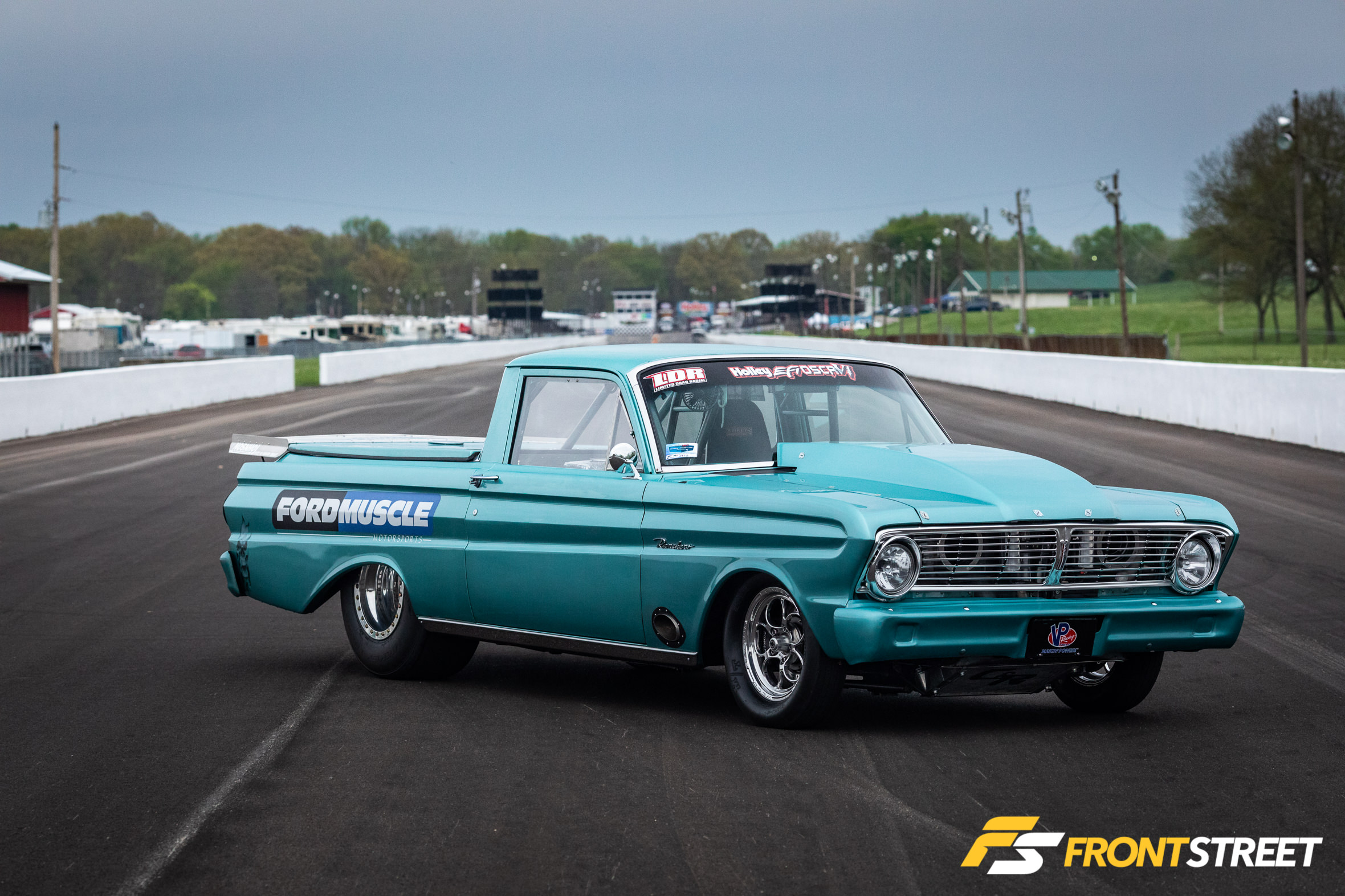
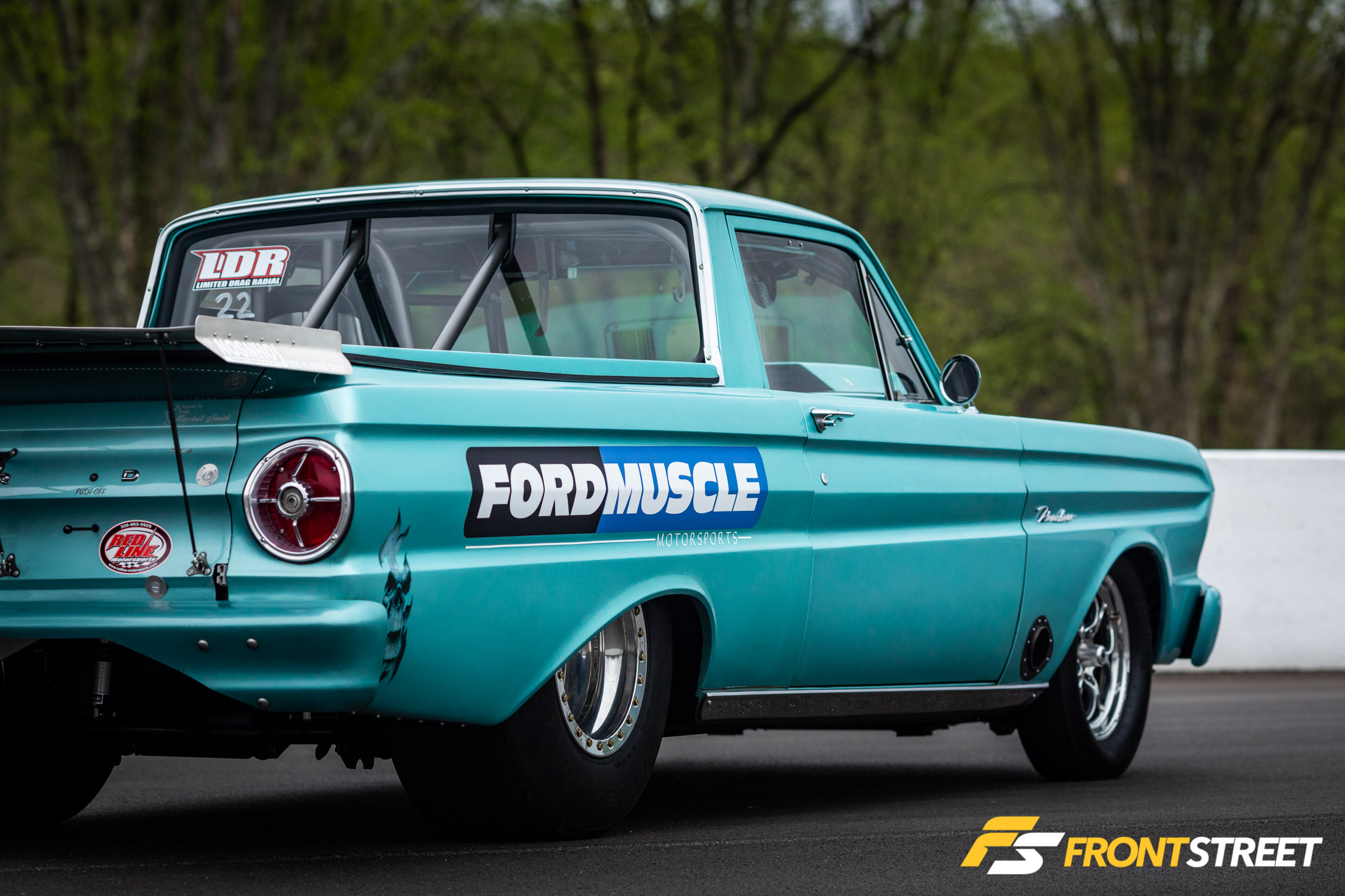
With the engine and transmission installed into the Ranchero, Rick’s budget was busted… again. It wasn’t critical, though, as Pete Johnson was elbows deep in his own Drag Week Split Window ’63 Corvette build, which meant Rick had to wait. It worked out perfectly, as he was able to save up for the next step in the project: turbocharger hot- and cold-side plumbing, turbocharger mounts, and other fabrication tasks to help finalize the project.
“Pete and Travis McCann came over to my house and assessed the engine compartment, and the very next day Pete had a detailed parts list for me. I dropped close to $4,000 within three days on plumbing, mounts, and fittings. Once I received all the parts, Pete picked up the Ranchero and Pete and Travis knocked it out in no time. They had well over 80 hours in it, and I picked it back up sooner than I expected. Seeing it for the first time all plumbed and ready to go was surreal. It was awesome!” he says.
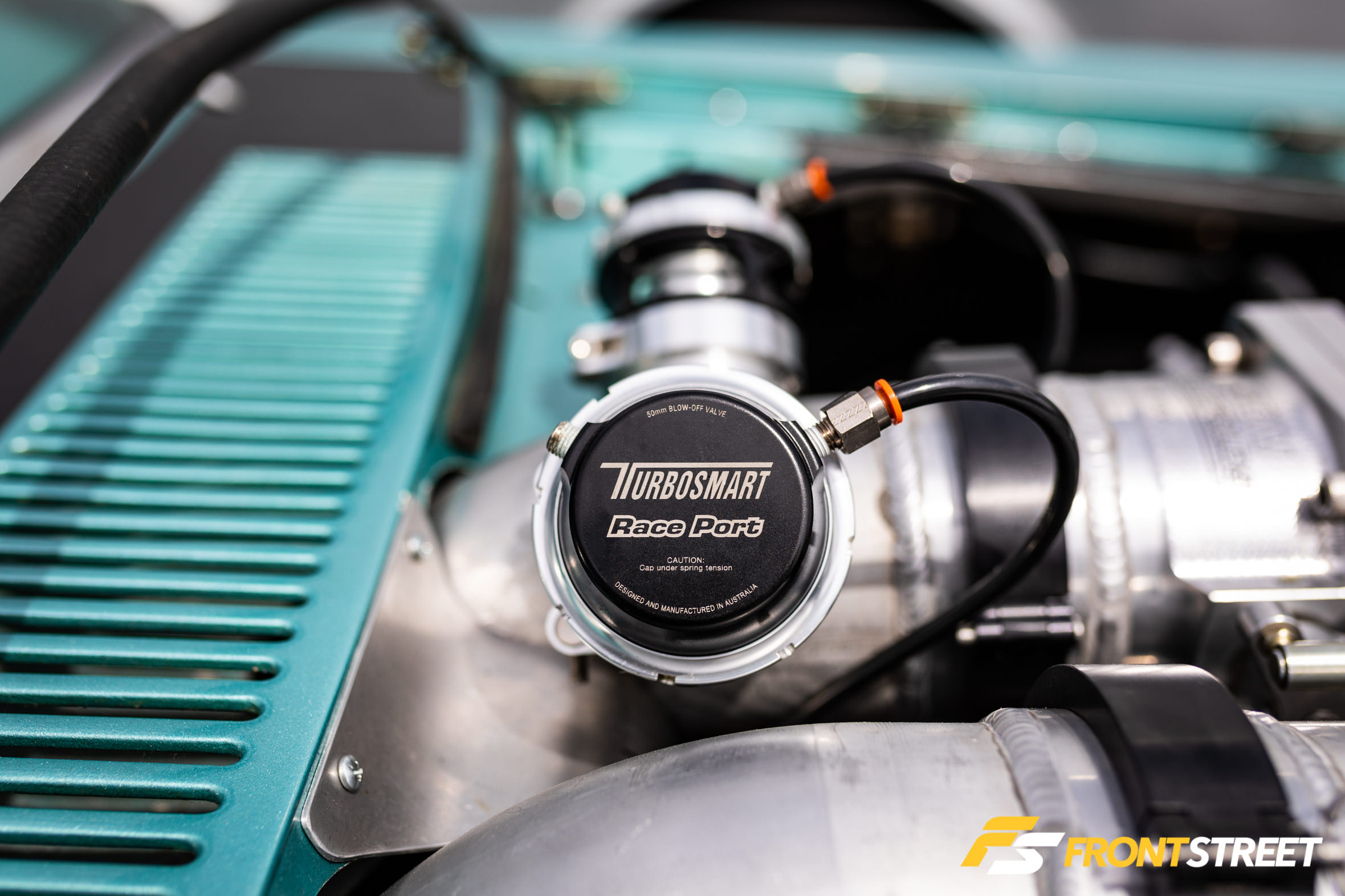
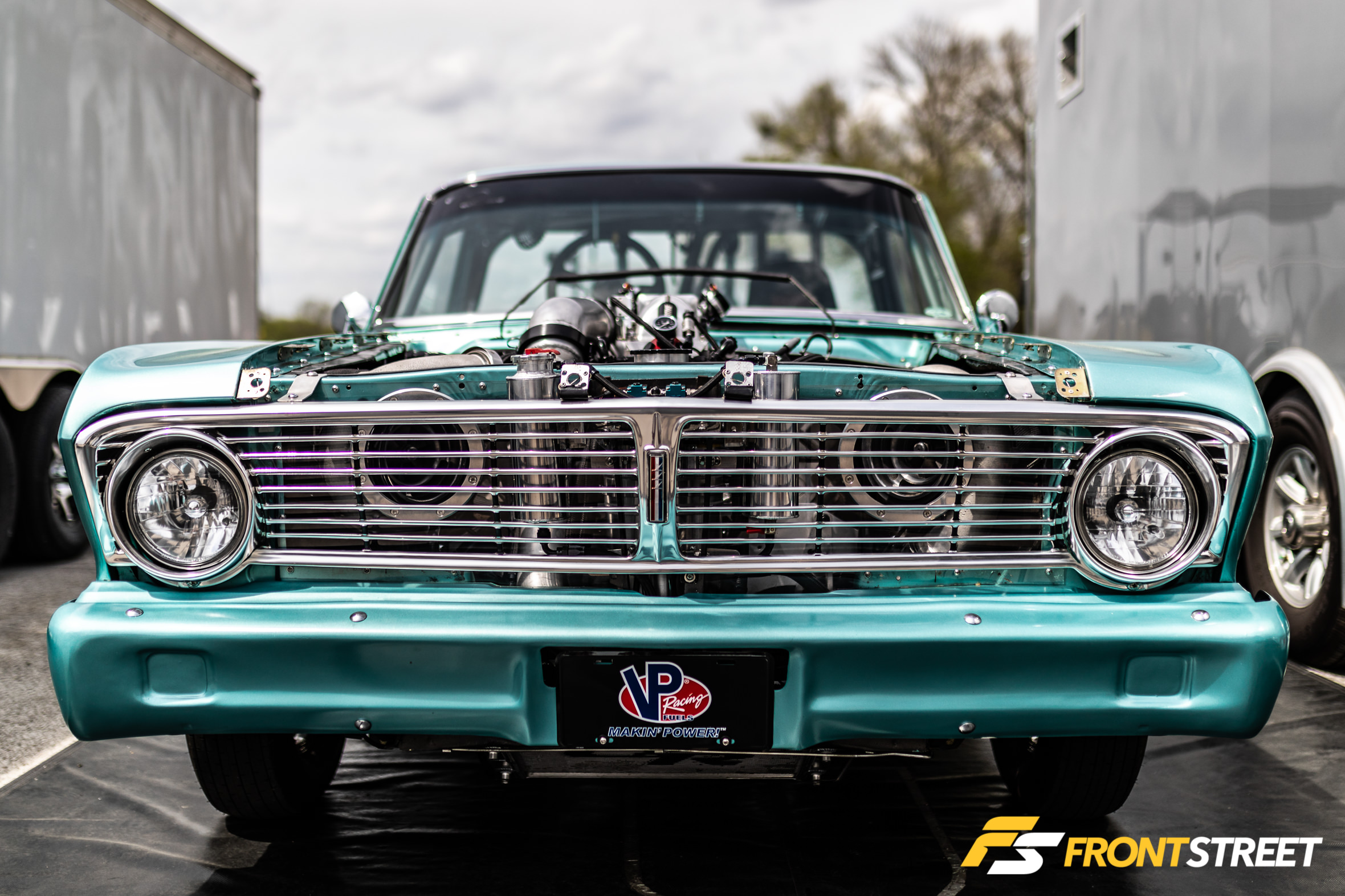
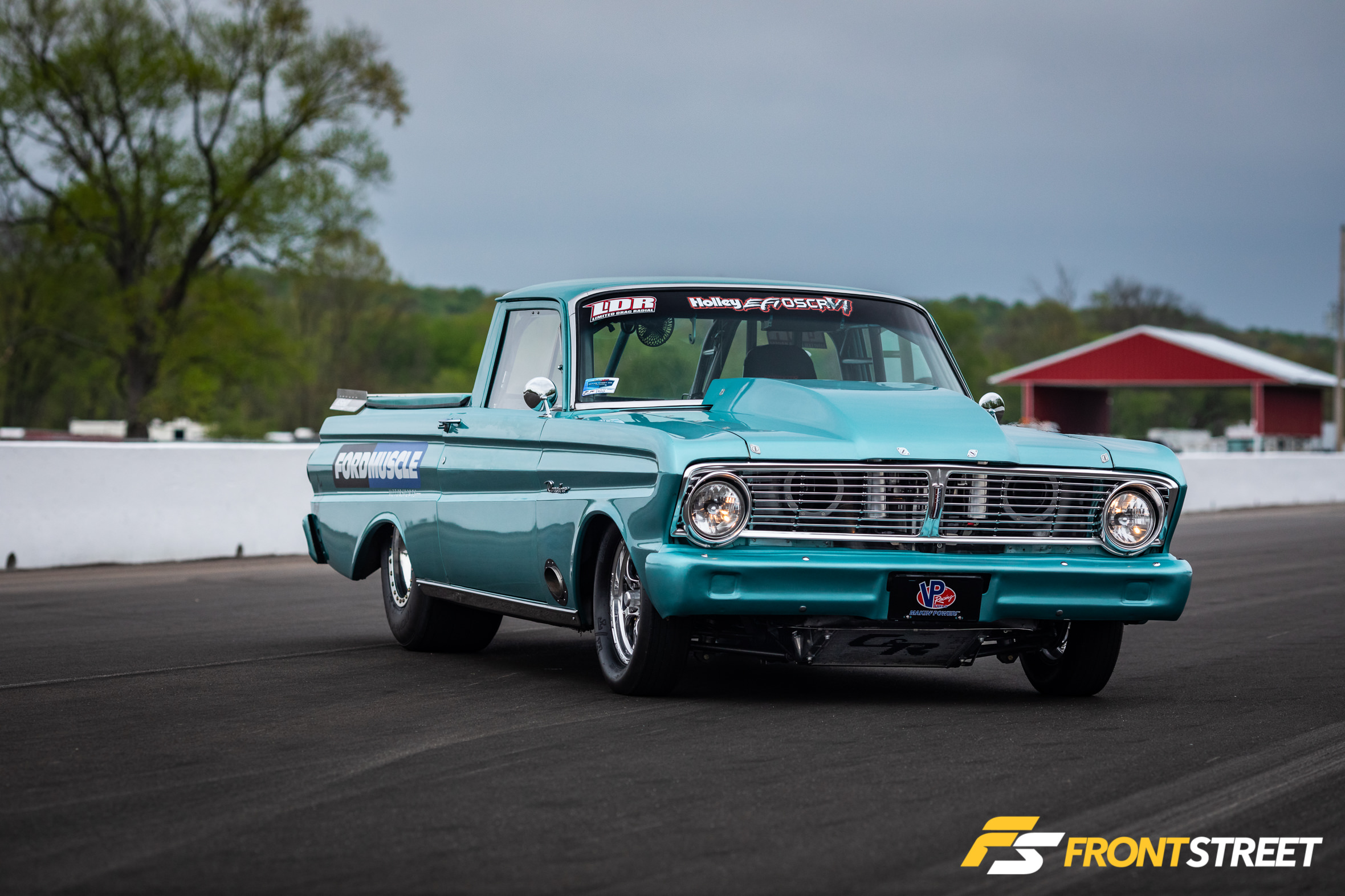
The Holley Dominator engine management system, harnesses, sensors, and other related equipment were purchased through Matt Bell at Redline Motorsports, who provided guidance and his extensive knowledge during the installation and setup process.
“Matt will ultimately be tuning it when we start trying to really lean on it. Matt has been very helpful with his support and knowledge with Holley EFI systems, and always picked up the phone when I was wiring the Ranchero for EFI and helped me through issues I was having, that were mostly self-inflicted,” says DeVito.
When I ran into Rick and Melissa at OSCR—where we shot these photos—he was still shaking the car down with help Travis, who was poring over the tuneup to ensure it was happy. They had the car set up to build about half the boost it’s capable of producing, and the passes they made were mainly to make sure all systems were operating properly and Rick was comfortable in the car.
During the time we spent together, the topic of support came up over and over again; without help and assistance from the people mentioned in this article, Rick DeVito wouldn’t be living out his dreams on the racetrack. His happiness with the project is contagious, and I found it hard to tear myself away from the conversation. Budget builders are the lifeblood of the performance world, and Rick DeVito embodies that spirit. It’s only a matter of time until he cracks the next performance barrier for this car—200 miles per hour in the quarter-mile. We’ll be watching!
